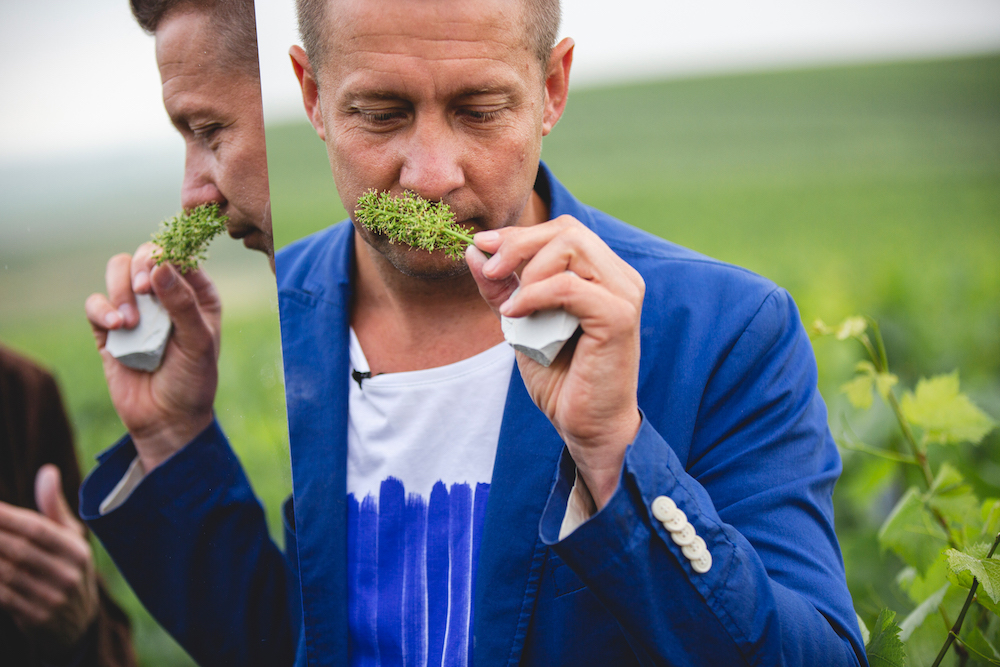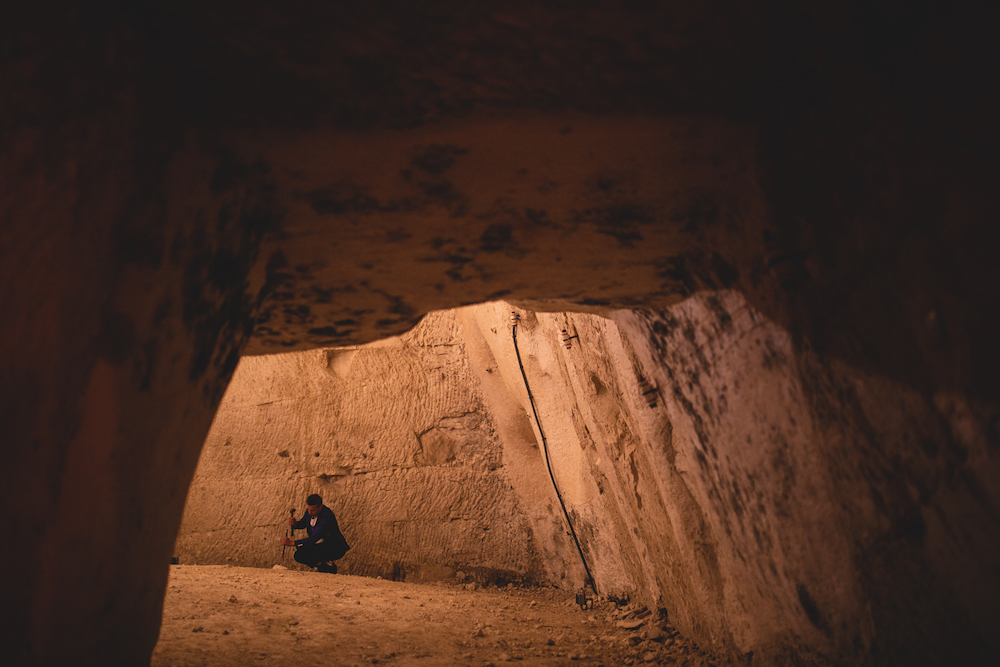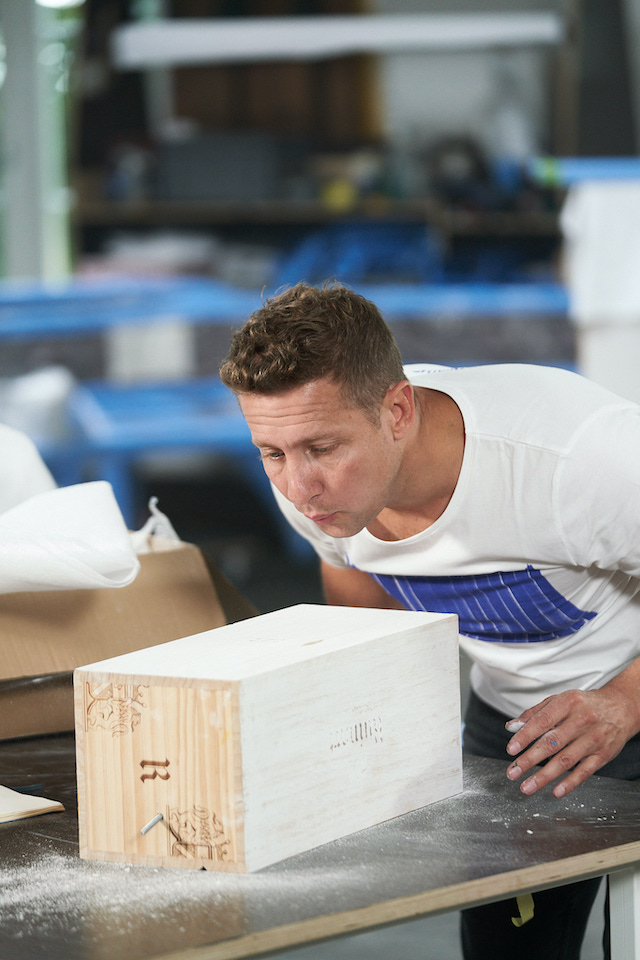JP Pryor talks to artist Jeppe Hein about his travelling art activation Breathe With Me, overcoming an emotional breakdown and why art is therapy
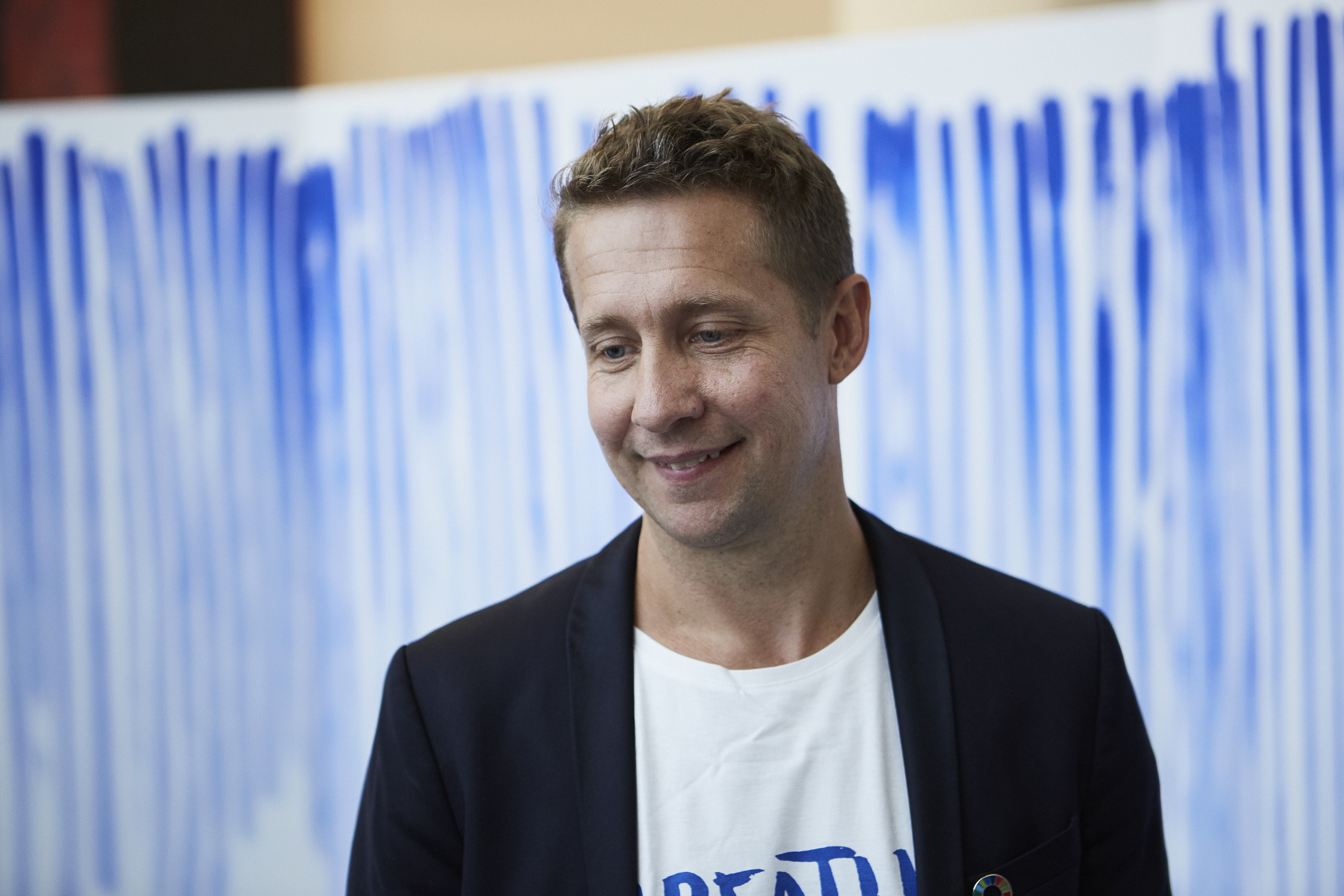
What is the purpose of art if not to connect individuals to consider the deeper profundities of existence – and how is that best achieved in an era increasingly defined by digital distraction, in which we are all moving closer to that post-capitalist paradigm of being isolated units of smart-phone-fuelled consumption? The prolific Berlin-based Danish artist Jeppe Hein thinks he might just have the answer – take a breather, and slow down. Hein is recognised all over the world for his site-specific interactive sculptures – perhaps, most of all, for his swirling mazes of tall free-standing mirrors, which have graced environments as globally disparate as the Desert X Festival in Nevada and the permanent sculpture park at the Carmignac Foundation in Porquerolles. He is widely celebrated for his poignantly humanistic approach to art practice, and his somewhat voracious desire for human connection actually led to him suffering a chronic breakdown a decade ago, which he documented in the nakedly vulnerable The Happiness of Burnout. Since his recovery, he has devoted much of his time to meditation and employing his art practice to promote the practice of mindfulness.
In Hein’s Breathing Watercolours series the simple act of breathing and painting are inextricably tied together, with a painted blue line lasting precisely as long as a single exhale. It is a practice that he initially employed when mentally unstable to bring himself back to the world, and last month he shared his discipline, quite literally, with the world. The travelling art activation Breathe With Me began life at The Youth Climate Change Summit at the UN General Assembly in September before moving on to Central Park, where it had the honour of being the largest public art activation in the park for some ten years–consisting of a giant curvaceous wall upon which diplomats and public alike were invited by the artist to take a moment to slow down and, very simply, paint their breath. This act of artistic democratisation, designed to bond us all in the knowledge that we all breathe the same air, share the same planet, and are not as alone as may think, is effectively the artist’s antidote to the dystopian fast-paced avalanche of the information age. Here, he speaks to us about the genesis of his global art activation, overcoming crippling emotional breakdown and tells us why all art, is essentially a form of therapy.
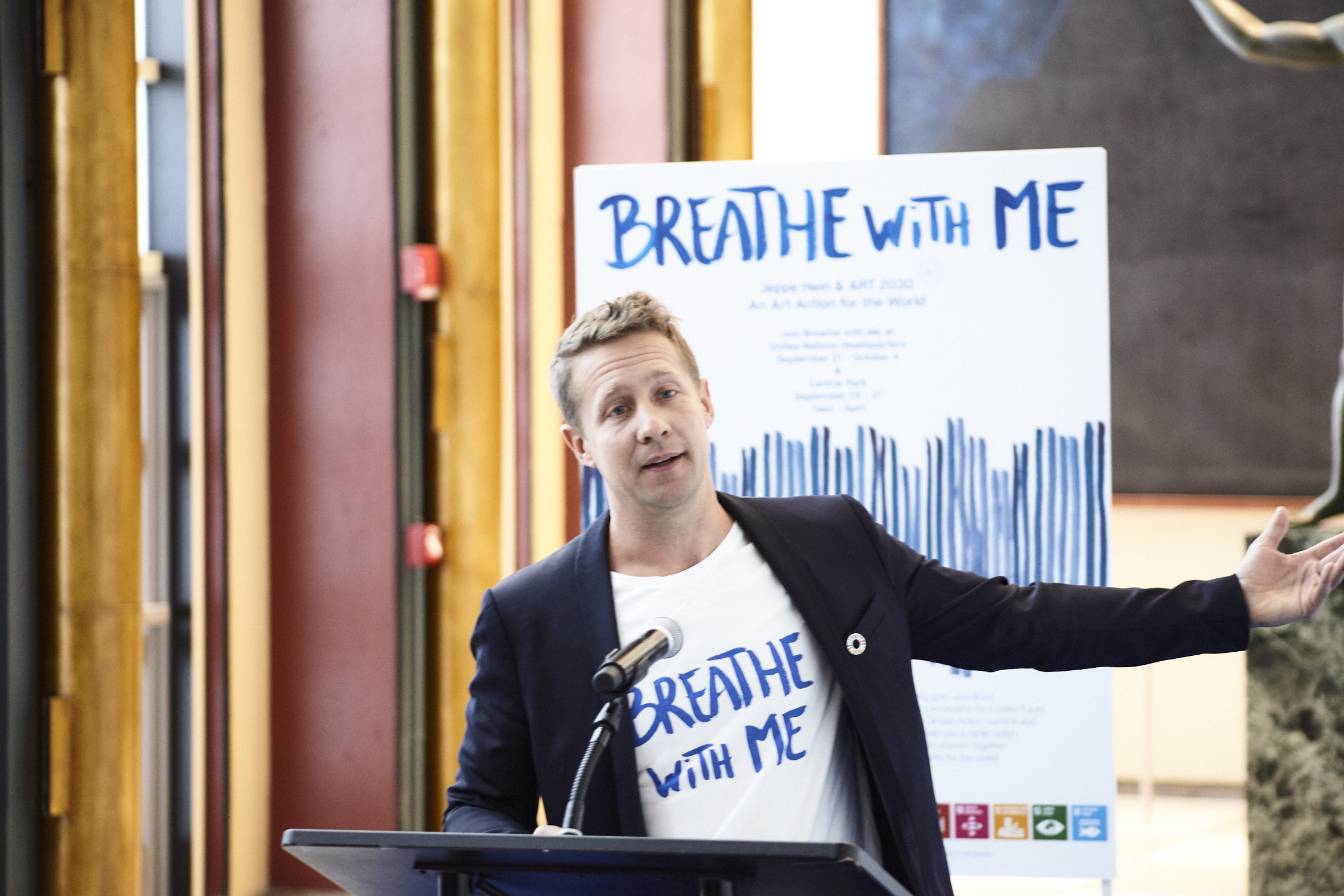
Where did the idea for Breathe With Me come from?
I started to create small lines of watercolour just three days before I had my first anxiety attack, which led to total burnout. I had become very scared on an airplane and thought I would die. I lost complete control of my body and of my mind. I really couldn’t feel my body. As I later recovered, I continued to do create these small lines while inhaling and exhaling, trying to control my breathing. Burnout is like a hardcore flu without a fever–you’re dizzy, you feel sound is too much, you feel like you have no balance. You’re filled with fear and everything hurts. My mother helped me to breathe every night – she was counting my breath, one, two, three, inhale… four, pause. I started to write about the experience, and now, I’ve created something like 7,000 or more line watercolours – it’s become like a diary. This personal crisis, which was ten years ago now, where I couldn’t breathe, happened because I was looking for love and acceptance all over the place, while travelling around doing lectures, doing openings, and always trying to be present, because I thought my art couldn’t be alone, or stand alone, without me present. I would start to slip into performing because I wanted to convince people with all the tools I had that they liked me. I think the burnout came from this need to feel loved, and, of course, in those situations, you’re not getting accepted, you’re not feeling love for real.
Why is it important to you that art connects, or is interactive in some sense?
I think it’s just who I am. I grew up trying to connect with people in many different ways. Maybe I learned it, in a way, because my parents’ split-up. My father was living in a hippy collective with a lot of people and there was always a fight in me for attention. My parents helped a lot of people in need when I was young – drug abuse, alcoholic people; they worked in a school for kids who had problems. I’m not complaining because it made me who I am now, but, of course, as a small boy you get very good at creating attention for yourself. When I got older, I figured: how do you get attention? How do you get contact with people, how do you touch people, and so on? I think because of all that, I ended up in the art world. I’ve always been interested in how people behave with each other, and how you get people talking to each other. I think the big thing for me, after ten years of finding the spiritual aspect of my work, is that I’m not trying to put myself on top of it any more. My awareness of what I’m doing, and why I’m doing it, has changed. I don’t have that ego-driven notion that I’m a genius artist any more. I think inspiration and awareness is just there all of the time and you can open up for it, and be a cipher for it. At a certain moment, you can be opened up to this kind of cloud of energy or ideas that is around us all.
How do you feel about the future and climate change?
I’m an optimist. Being in the UN for two days doing Breathe With Me gave me goose bumps – you really feel the energy of how many young people were invited, and they make a change; they do something. I met a 15 year-old football player from the middle of Africa and whenever he has scored a goal, from very young, he has bought a tree from his own money and he planted that tree. How beautiful is that; a young boy finding out how to do something like that? There were so many young people there with energy and self-motivation. I think we are in a moment now where Greta Thunberg and a lot of other people want to make older people much more aware, and I think it will happen. I really believe that. With my Breathe With Me project I hope to make people more aware that we can really change a lot. If I can inspire someone, and just make them aware what one or two inhalations and exhalations of mindfulness can bring in their own lives… Well, I hope they can bring that little moment within their everyday life, and that can change big things, I think.
To what degree, for you, is art therapy?
Breathe With Me definitely started as a therapy project; because it’s starting point was to help my body and my mind to come back to a new life. I don’t think it’s therapeutic, though. I think it’s just more about awareness. I suppose, if you look at old artists’ paintings, then I do think a lot of that was therapy. If you look at a figure like Picasso or Bacon, then I think that’s the highest level of therapy. Not like therapy therapy, but more a way of surviving. I think a lot of my colleagues and me, are using art as a way to say something and get something out emotionally, because we can’t do it another way. The playfulness in my work is really there to make you open up your heart. This is the biggest dream of my life right now, and if you try to inspire the world to be happier, no, not happier, more empathetic, and open up people’s hearts – what more can you do?
Is it only by going into that dark space of burnout that you felt inspired to connect with others in these ways?
Well, it’s a modern expression burnout, but it is real. It is as though your mind, your body, your organs… everything is just burnt from top to bottom and that can’t just be repaired in two weeks. Of course, when it happened, a lot of people like my mother and my wife were saying, ‘Hey, maybe you’re going too fast…’ and I was like, ‘Yes, yes… I’ll take Saturday off’. But my mind was just going constantly, and if I didn’t have anything to do, I would start five projects, or call someone and say, should we do that book, should we do this, or that? I felt fear, and I got anxiety attacks and, of course, I looked into myself and thought, what’s going on? I went to a Buddhist monk who wrote a lot about stress and anxiety, and she told me, ‘You just have to take a note of everything you do here because you’re very ill.’ It was just what I needed to hear, and I couldn’t hear it from someone close to me.
Who inspires you spiritually?
I’m a very big fan of Gandhi. I often think of that story when he walked by a dead body and said to a person nearby, ‘Who died?’ This person said, ‘Look, he’s almost rotting. It’s very disgusting,’ Then Gandhi said: ‘But he has really beautiful teeth.’ Something about the story is very beautiful, because it always depends on how you look at the beauty and the darkness, in a way. I think we can find beauty in everything. There’s always a lot of light. There’s always darkness, but there’s also a lot of light. I think Breathe With Me brings a lot of light to a lot of people, and to myself as well.
